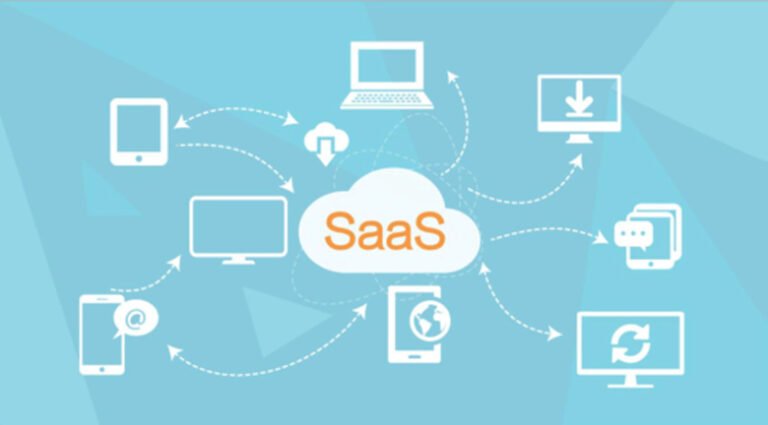What is SaaS in Cloud Computing
Cloud computing has changed the way we use technology. Instead of installing heavy software or managing complex IT systems, we now access powerful tools directly through the internet. At the heart of this digital revolution is SaaS (Software as a Service).
If you’ve ever used Google Docs, Zoom, or Dropbox, then you’ve already used SaaS. But what exactly is SaaS in cloud computing, and why is it so important for individuals and businesses? Let’s break it down step by step.
What is SaaS in Cloud Computing?
SaaS (Software as a Service) is a cloud computing model where software is hosted by a provider and delivered to users over the internet. Instead of buying software and installing it on your computer, you simply log in via a browser or app and start using it.
The provider manages updates, security, and maintenance, so you don’t have to worry about technical issues.
👉 Example: Gmail, Microsoft 365, or Slack. You don’t download them to your system; you just sign in and use them online.
How SaaS Works in Cloud Computing
SaaS runs on cloud servers managed by the provider. Here’s how it works:
- The provider hosts the software in the cloud.
- Users access the software through the internet using a browser or mobile app.
- Data is stored securely on cloud servers, not on personal devices.
- Updates and patches are handled automatically by the provider.
This makes SaaS more convenient compared to traditional software models.
Key Features of SaaS
Some of the most important features of SaaS include:
- Accessibility: Use it anywhere with an internet connection.
- Subscription-based: Pay monthly or yearly instead of a large one-time fee.
- Automatic updates: The provider takes care of upgrades and fixes.
- Scalability: Easily switch between plans depending on your needs.
- Multi-device support: Works on desktops, tablets, and smartphones.
Benefits of SaaS in Cloud Computing
SaaS offers several advantages that make it the most popular type of cloud service.
1. Cost-Effective
No need to buy expensive licenses or hardware. You just subscribe and pay for what you use.
2. Easy to Use
You don’t need technical expertise. Just sign up, log in, and start using the software.
3. Collaboration Made Simple
Multiple users can work together in real-time. For example, teams can edit a document simultaneously in Google Docs.
4. Security and Reliability
SaaS providers invest heavily in security, data backups, and compliance standards like GDPR and ISO.
5. Flexibility and Scalability
You can start small and expand as your business grows.
SaaS Examples in Cloud Computing
Some popular SaaS applications include:
- Google Workspace – Gmail, Docs, Sheets, Drive
- Microsoft 365 – Word, Excel, Outlook online
- Slack – Team communication and collaboration
- Zoom – Video conferencing
- Dropbox – Cloud storage and file sharing
- Salesforce – Customer relationship management (CRM)
These applications have become essential tools for businesses, students, and individuals worldwide.
SaaS vs PaaS vs IaaS
To fully understand SaaS, let’s compare it with other cloud models:
- SaaS (Software as a Service): Complete applications delivered over the internet. Example: Gmail.
- PaaS (Platform as a Service): Provides a platform for developers to build apps. Example: Google App Engine.
- IaaS (Infrastructure as a Service): Provides cloud-based servers and storage. Example: Amazon Web Services (AWS).
Among the three, SaaS is the easiest for non-technical users since it delivers ready-to-use applications.
Challenges and Limitations of SaaS
While SaaS is powerful, it comes with some challenges:
- Internet Dependence: Without internet access, SaaS apps cannot function.
- Limited Customization: Some SaaS tools don’t allow advanced customization.
- Long-Term Cost: Subscription fees may become expensive over time.
- Data Concerns: Some organizations may worry about storing sensitive data in the cloud.
Businesses should weigh these pros and cons before adopting SaaS solutions.
The Future of SaaS in Cloud Computing
The SaaS market is growing rapidly. Experts predict it will surpass $300 billion globally in the coming years. Future trends include:
- AI-powered SaaS solutions for automation.
- Industry-specific SaaS applications for healthcare, finance, and education.
- Stronger cybersecurity measures to protect user data.
As remote work and digital transformation expand, SaaS will continue to dominate cloud computing.
Final Thoughts
So, what is SaaS in cloud computing? It’s a model where software is delivered online through the cloud instead of being installed on your device. SaaS makes technology simpler, cheaper, and more accessible for individuals and businesses alike.
From Gmail to Zoom, SaaS applications are now the backbone of how we work, study, and communicate. As cloud computing continues to evolve, SaaS will remain at the center of innovation, efficiency and global collaboration.
